Explore web search results related to this domain and discover relevant information.

Coherent Market Insights Reports has released a detailed research analysis on the Global Antihyperlipidemic Drugs Market 2025 highlighting key trends growth dynamics and forecast insights through 2032 This comprehensive report presents an in depth evaluation of the market landscape analyzing ...
It covers: • Competitive landscape overview • Historical data and future forecasts • Company revenue share analysis • Regional and national market trends • Emerging opportunities and growth drivers The Leading Players involved in the Antihyperlipidemic Drugs Market are: • Sanofi S.A.Buy The Latest Version Of the Reports with an Impressive Discount (Up to 25% Off ) at: https://www.coherentmarketinsights.com/insight/buy-now/5992 1. Which are the key dominating players in the market? 2. What are the key business strategies chosen by the leading player to sustain in the Global Antihyperlipidemic Drugs Market?Leading market research firm SkyQuest Technology Group recently released a study titled ' Injectable Drug Delivery Market Global Size, Share, Growth, Industry Trends, Opportunity and Forecast 2024-2031,' This study Injectable Drug Delivery report offers a thorough analysis of the market, as well as competitor and geographical analysis and a focus on the most recent technological developments.Global Cancer Antibody Drug Conjugate Market Size, Drug Sales, Drug Dosage, Price, and Clinical Trials Outlook 2029 Report Highlights: * Global Antibody Drug Conjugates Market Opportunity: > 40 Billion By 2029 * Global and Regional Antibody Drug Conjugate Market Insight * Approved Drugs Sales Insight Global and Regional, Yearly and Quarterly, 2019 -2023 * Approved Antibody Drug Conjugates - Availability, Dosage and Price Insight * Insight On Antibody Drug Conjugates In Clinical Trials: > 550 ... Market Study Report, LLC, has compiled an exhaustive research study of the ‘Alcohol Testing And Drug Testing Equipment market’, detailing every single market driver and intricately analyzing the business vertical.
Latest news and reviews from Technology and Market Research from around the globe. Engage with the news that matters to you.
The web-based Drug market patterns and trends module contains the latest analysis of global, regional and subregional estimates of and trends in drug demand and supply in a user-friendly, interactive format supported by graphs, infographics and maps.
The Key findings and conclusions booklet provides an overview of selected findings from the analysis presented in the Drug market patterns and trends module and the thematic Contemporary issues on drugs booklet, while the Special points of interest fascicle offers a framework for the main takeaways and policy implications that can be drawn from those findings.The booklet opens with a look at the 2022 Taliban ban on the cultivation and production of and trafficking in drugs in Afghanistan and its implications both within the country and in transit and destination markets elsewhere. This is followed by a chapter examining the convergence of drug trafficking and other activities and how they affect natural ecosystems and communities in the Golden Triangle in South-East Asia.The chapter also assesses the extent to which drug production and trafficking are linked with other illicit economies that challenge the rule of law and fuel conflict. Another chapter analyses how the dynamics of demand for and supply of synthetic drugs vary when the gender and age of market participants are considered.The booklet continues with an update on regulatory approaches to and the impact of legalization on the non-medical cannabis market in different countries, and a review of the enabling environment that provides broad access to the unsupervised, “quasi-therapeutic” and non-medical use of psychedelic substances. Finally, the booklet offers a multi-dimensional framework on the right to health in the context of drug use; these dimensions include availability, accessibility, acceptability, quality, non-discrimination, non-stigmatization and participation.
Drug Market Analyses examine the market dynamics and the trafficking, distribution, and abuse patterns associated with cocaine, heroin, marijuana, MDMA, methamphetamine, and other dangerous drugs within United States High Intensity Drug Trafficking Areas (HIDTAs).
Appalachia High Intensity Drug Trafficking Area September 2011 2011-R0813-001 PDF (2,092 KB) Previous yearsArizona High Intensity Drug Trafficking Area September 2011 2011-R0813-002 PDF (2,708 KB) Previous yearsAtlanta High Intensity Drug Trafficking Area September 2011 2011-R0813-003 PDF (2,377 KB) Previous yearsCentral Florida High Intensity Drug Trafficking Area September 2011 2011-R0813-006 PDF (1,891 KB) Previous years
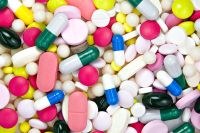
Market Overview The Global Prescription Drugs Market is expected to reach at a Significant CAGR during the forecast period 2024 2031 Prescription Drugs Market report published by DataM Intelligence provides in depth insights and analysis on key market trends growth ...
Press release - DataM Intelligence 4Market Research - Global Prescription Drugs Market Poised for Strong Growth with Rising Demand for Innovative Therapies 2025 | Top key players - Sanofi, Pfizer Inc, GlaxoSmithKline plc. - published on openPR.comMarket Overview: The Global Prescription Drugs Market is expected to reach at a Significant CAGR during the forecast period 2024-2031. Prescription Drugs Market report, published by DataM Intelligence, provides in-depth insights and analysis on key market trends, growth opportunities, and emerging challenges.Through a combination of qualitative and quantitative research methods, it offers comprehensive reports that help clients navigate complex market landscapes, drive strategic growth, and seize new opportunities in an ever-evolving global market. Get a Free Sample PDF Of This Report (Get Higher Priority for Corporate Email ID):- https://datamintelligence.com/download-sample/prescription-drugs-market?sz The Prescription Drugs Market refers to the segment of the pharmaceutical industry that develops, manufactures, and distributes medications requiring authorization from licensed healthcare professionals.These drugs are regulated to ensure safety, efficacy, and quality, addressing a wide range of acute and chronic health conditions. The market plays a vital role in global healthcare and patient treatment outcomes.
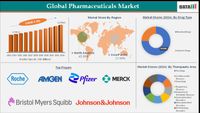
According to DataM Intelligence, ... of 7.0% during the forecast period 2025-2033. The Pharmaceuticals Market refers to the industry involved in the research, development, production, and distribution of drugs and medications....
According to DataM Intelligence, the global pharmaceuticals market size reached US$ 1,740.44 Billion in 2024 and is expected to reach US$ 3,178.63 Billion by 2033, growing at a CAGR of 7.0% during the forecast period 2025-2033. The Pharmaceuticals Market refers to the industry involved in the research, development, production, and distribution of drugs and medications.It includes prescription drugs, over-the-counter (OTC) products, branded and generic drugs, and treatments across various therapeutic areas like cardiovascular diseases, oncology, and neurology. This market serves hospitals, retail pharmacies, online channels, and regions worldwide, focusing on addressing chronic diseases, innovation in biologics, and personalized medicine.📌 Access valuable insights with our sample report - (Please enter your Corporate Email ID to get priority access):- https://www.datamintelligence.com/download-sample/pharmaceutical-market?sindhuri ☛ Pharmaceuticals Market Forces Driving Future Growth The pharmaceuticals market is driven by the rising prevalence of chronic diseases like diabetes, cancer, and cardiovascular disorders, along with an aging global population that increases demand for long-term therapies. Innovation in biologics, gene therapies, and AI-driven drug discovery also boosts growth, while digitalization and online pharmacies reshape distribution.📌 Speak to Our Senior Analyst and Get Customization in the report as per your requirements: https://www.datamintelligence.com/customize/pharmaceutical-market ☛ Segment Covered in the Pharmaceuticals Market: By Type Prescription Drugs and Over-the-Counter (OTC) Drugs.
The Global Topical Drugs Contract Manufacturing Market size is estimated to be valued at USD 12.3 billion in 2025 and is expected to reach USD 18.9 billion by 2032, exhibiting a compound annual growth rate (CAGR) of 6.5% from 2025 to 2032. ➤Strategic Actionable Insights for the Market ● ...
Press release - WMR - Topical Drugs Contract Manufacturing Market Set for Dynamic Rise with Key Players like Pfizer, Johnson & Johnson, and Teva - published on openPR.comThe Topical Drugs Contract Manufacturing market is witnessing substantial growth, driven by the increasing demand for personalized medicine and the rising prevalence of skin-related conditions. As the market evolves, manufacturers are focusing on enhancing their production capabilities to meet the growing needs of pharmaceutical companies.The Global Topical Drugs Contract Manufacturing Market size is estimated to be valued at USD 12.3 billion in 2025 and is expected to reach USD 18.9 billion by 2032, exhibiting a compound annual growth rate (CAGR) of 6.5% from 2025 to 2032. ➤Strategic Actionable Insights for the Market ● The rising trend of outsourcing in the pharmaceutical industry is a significant driver for the Topical Drugs Contract Manufacturing market.A report from the American Academy of Dermatology highlights that innovative topical therapies are projected to capture over 40% of the market share by 2025. ➤Emerging Trends and Market Shift The Topical Drugs Contract Manufacturing market is witnessing several emerging trends.

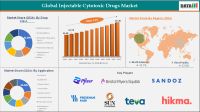
The Injectable Cytotoxic Drugs Market was valued at US 11 48 billion in 2023 rose to US 12 10 billion in 2024 and is projected to reach US 20 20 billion by 2033 expanding at a CAGR of 5 9 ...
Press release - DataM Intelligence 4 Market Research LLP - Injectable Cytotoxic Drugs Market Size to Reach US$ 20.20 billion by 2033 - Exclusive Report by DataM Intelligence - published on openPR.comThe Injectable Cytotoxic Drugs Market was valued at US$ 11.48 billion in 2023, rose to US$ 12.10 billion in 2024, and is projected to reach US$ 20.20 billion by 2033, expanding at a CAGR of 5.9% during the forecast period 2025-2033.This closed system allows for aseptic filling and lyophilization directly into the bag, providing a ready-to-infuse, needle-free format for administering cytotoxic drugs. Injectable Cytotoxic Drugs Market Drivers ➠ Rising Cancer Incidence The growing prevalence of various cancer types, such as breast, lung, and hematologic cancers, is the primary driver of demand for injectable cytotoxic drugs.Emerging economies in this region are increasingly focusing on improving access to injectable cytotoxic drugs, which is expected to sustain long-term growth. Other regions, including Latin America and the Middle East & Africa, are showing steady market growth, primarily due to increasing healthcare expenditure, improved diagnostic capabilities, and growing awareness about cancer treatments.
Explore the global anti-Parkinson's drugs market with our report, analyzing trends, revenue projections, and CAGRs from 2024 to 2030. Segmented by drug class and region, the study covers market dynamics, ESG impacts, and competitive analyses of key players like AbbVie and Teva.
The global market for anti-Parkinson's drugs is projected to grow from $6.1 billion in 2025 to reach $9.2 billion by the end of 2030, at a compound annual growth rate (CAGR) of 8.6% from 2025 to 2030 The report provides an overview of the global anti-Parkinson's drugs market and analyzes market trends.In February 2025, the FDA approved a second drug-device combination product, Onapgo (apomorphine hydrochloride) from Supernus Pharmaceuticals, to treat motor fluctuations in adults with advanced PD. The market is segmented by drug class (based on mechanisms of action) and regions.Dublin, Sept. 04, 2025 (GLOBE NEWSWIRE) -- The "Anti-Parkinson's Drugs: Global Markets to 2030" report has been added to ResearchAndMarkets.com's offering.By drug class, the market is segmented into dopaminergic, dopamine agonists, catechol-O-methyltransferase (COMT) inhibitors, monoamine oxidase-B (MAO-B) inhibitors, anticholinergic and others.
Europe over the counter (OTC) drugs market was valued at USD 53.5 billion in 2024 and is estimated to grow at a CAGR of over 5.6% from 2025 to 2034 driven by rising adoption of self-medication trends
The market is expected to grow from USD 55.5 billion in 2025 to USD 90.8 billion in 2034, at a CAGR of 5.6% during the forecast period, according to the latest report published by Global Market Insights Inc. The growth of the Europe OTC drugs market is fueled by the growing prevalence of chronic and lifestyle-related conditions such as diabetes, cardiovascular disorders, arthritis, and obesity-related issues.Over-the-counter (OTC) drugs are medications that can be directly purchased from retail pharmacies as well as online pharmacies without the need for a doctor's prescription. These drugs are used for managing various conditions such as pain relief, allergy management, digestive health, dermatological issues, and dietary requirements. The market is characterized by the presence of several global and domestic pharmaceutical players.The top 6 players in the Europe OTC drugs market include Haleon, Kenvue, Bayer, Procter & Gamble Company, Reckitt, and Sanofi, accounting for around 18–22% of market share. These players leverage brand recognition, extensive product portfolios, and well-established distribution networks to maintain a competitive edge.Moreover, this region has seen significant funding in research and development, leading to the introduction of novel OTC formulations and expanding indications, which further enhance their adoption and strengthen market dominance. · The Europe over the counter drugs market witnessed steady growth, growing from USD 50.1 billion in 2021 to USD 51.9 billion in 2023, fueled by the impact of the pandemic that created increased demand and adoption of immunity boosters, vitamins, and other supplements.

The global lyophilized injectable drugs market is set to grow at a 14.0% CAGR from 2025 to 2033, driven by rising demand for stable parenteral medications and expansion in oncology and infectious disease treatments. North America leads, with Asia Pacific experiencing fastest growth.
Dublin, Sept. 05, 2025 (GLOBE NEWSWIRE) -- The "Lyophilized Injectable Drugs Market Size, Market Share, Application Analysis, Regional Outlook, Growth Trends, Key Players, Competitive Strategies and Forecasts, 2025 To 2033" has been added to ResearchAndMarkets.com's offering.The 2024 market featured key players like Pfizer, Merck, and Sanofi with extensive oncology pipelines. CDMO entities like Vetter Pharma were crucial in lyophilization services. Companies from India increased their global presence, offering cost-effective lyophilized drugs.The global lyophilized injectable drugs market is anticipated to grow at an impressive CAGR of 14.0% between 2025 and 2033.The market encompasses categories like Anti-infective, Anti-neoplastic, and Anticoagulant drugs. In 2024, anti-neoplastic agents led due to high demand in oncology.
The think tank Global Financial Integrity's Transnational Crime and the Developing World report estimates the size of the global illicit drug market between US$426 and US$652 billion in 2014. With a world GDP of US$78 trillion in the same year, the illegal drug trade may be estimated as nearly ...
The think tank Global Financial Integrity's Transnational Crime and the Developing World report estimates the size of the global illicit drug market between US$426 and US$652 billion in 2014. With a world GDP of US$78 trillion in the same year, the illegal drug trade may be estimated as nearly 1% of total global trade.Execution is mostly used as a deterrent, and many have called upon much more effective measures to be taken by countries to tackle drug trafficking; for example, targeting specific criminal organisations that are often also active in the smuggling of other goods (i.e. wildlife) and even people. In many cases, links between politicians and the criminal organisations have been proven to exist. In June 2021, Interpol revealed an operation in 92 countries that shut down 113,000 websites and online marketplaces selling counterfeit or illicit medicines and medical products a month earlier, led to the arrests of 227 people worldwide, recovered pharmaceutical products worth $23 million, and led to the seizure of approximately nine million devices and drugs, including large quantities of fake COVID-19 tests and face masks.After the 1990s, particularly after the end of the Cold War (1991), borders were opened and trading and customs agreements were signed so that the routes expanded to include China, Central Asia, and Russia. There are, therefore, diversified drug trafficking routes available today, particularly in the heroin trade and these thrive due to the continuous development of new markets.The Border Police Chief of Iran said that his country "is a strong barrier against the trafficking of illegal drugs to Caucasus, especially the Republic of Azerbaijan." The drugs produced by the Golden Triangle of Myanmar, Laos, and Thailand, on the other hand, pass through the southern routes to feed the Australian, US, and Asian markets.
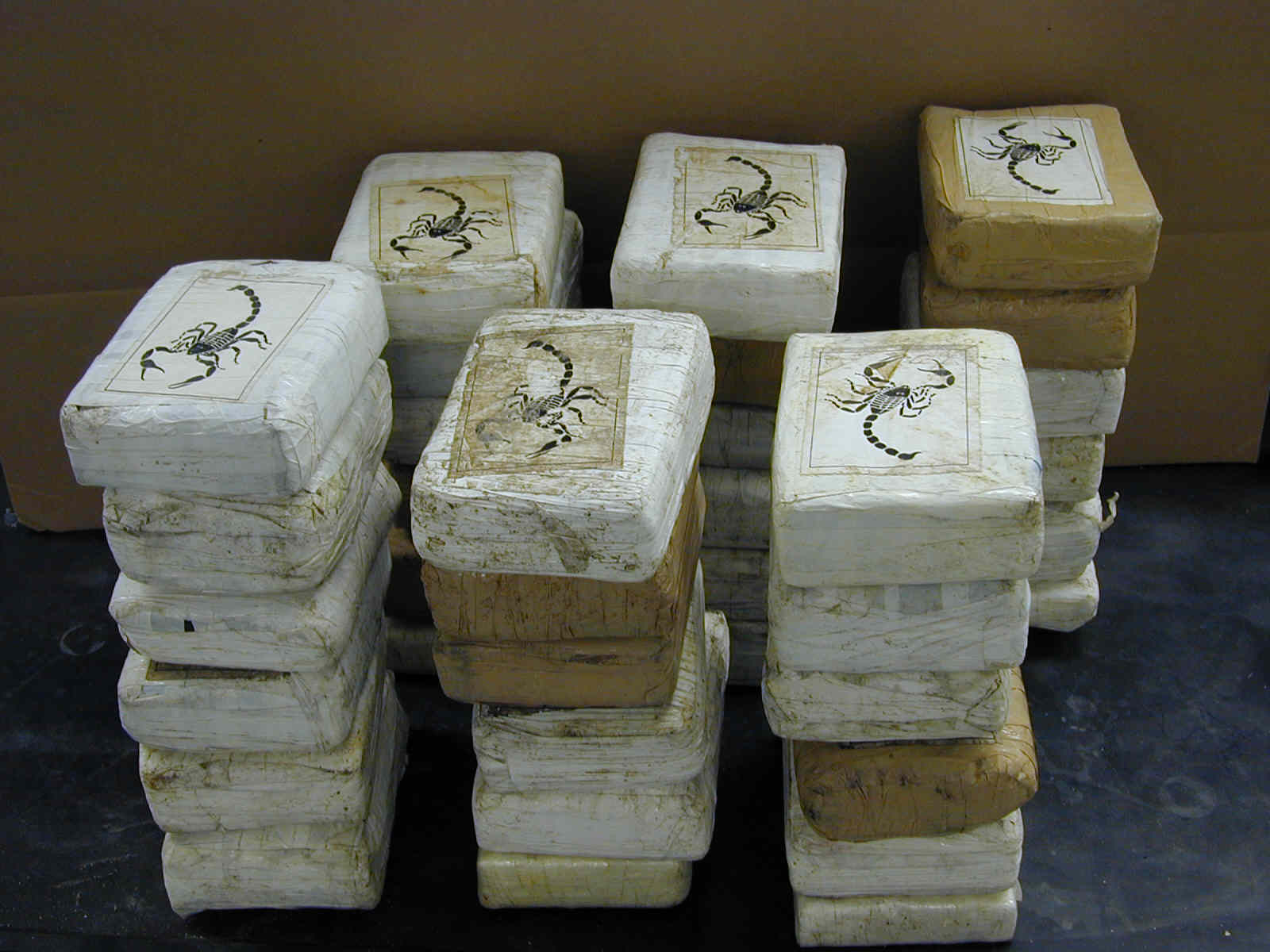
They are one of the main profit-generating activities of organised crime and are estimated to represent around one-fifth of global crime proceeds. The negative impacts of illicit drug markets are multifaceted and far-reaching, which is why they remain a key threat to the security of the European ...
They are one of the main profit-generating activities of organised crime and are estimated to represent around one-fifth of global crime proceeds. The negative impacts of illicit drug markets are multifaceted and far-reaching, which is why they remain a key threat to the security of the European Union and the safety of its citizens.Drug trafficking is a highly profitable commercial activity and remains a core business for organised crime groups across Europe today. Understanding the reality of the European drug market requires a holistic approach, following the supply chain from production and trafficking to distribution and sales.EU seaports must join forces to tackle maritime drug trafficking and strengthen data reporting, new report finds (June 2025 ) Latest study on Europe's ecstasy market reveals new trends in production and trafficking (March 2025 )Call to action on drug-related violence — #BreakTheCycle (November 2024 ) New analysis reveals highly dynamic and resilient market for new psychoactive substances (June 2024 )
"With estimates of $100 billion to $110 billion for heroin, $110 billion to $130 billion for cocaine, $75 billion for cannabis and $60 billion for synthetic drugs, the probable global figure for the total illicit drug industry would be approximately $360 billion.
Live statistics showing how much money is being spent on illegal drugs worldwide"With estimates of $100 billion to $110 billion for heroin, $110 billion to $130 billion for cocaine, $75 billion for cannabis and $60 billion for synthetic drugs, the probable global figure for the total illicit drug industry would be approximately $360 billion.[Pdf] Economic and Social Consequences of Drug Abuse and Illicit Trafficking [Pdf]- United Nations 1998 PublicationFrontline: drug wars: inside the $400bn global business | PBS
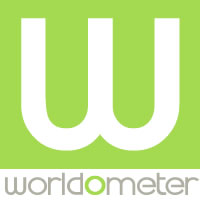
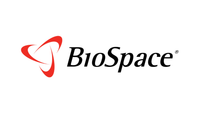
According to the DataM Intelligence, the global colorectal cancer drugs market size was valued as US$ 12.60 billion in 2024 and is expected to reach US$ 19.96 billion by 2033, growing at a CAGR of 5.2% during the forecast period 2025-2033.
Companies that prioritize innovation, strategic collaborations, and access strategies will be best positioned to capture market share as immunotherapy continues to redefine global cancer treatment standards. The global cancer drug market is undergoing a significant shift due to the rapid expansion of immunotherapy, particularly immune checkpoint inhibitors.The global burden of colorectal cancer, driven by aging populations, poor diet, sedentary habits, and genetic predispositions, is driving market growth. This trend is boosting the use of chemotherapy, targeted therapies, and immunotherapies, encouraging pharmaceutical companies to invest in innovative drug development and clinical trials.Chemotherapy remains the dominant segment in the colorectal cancer drugs market, accounting for nearly 57.6% share in 2024. The colorectal cancer market is dominated by chemotherapy segment due to the increasing incidence of cancer worldwide, aging populations, lifestyle changes, and environmental factors.North America leads the colorectal cancer drugs market, holding around 42.1% share, due to its advanced healthcare ecosystem and strong oncology research environment. Hospitals and treatment centers use advanced technologies for precise chemotherapy administration.
Innovations in drug delivery and expanding access in emerging markets boost growth, despite challenges like high costs and reimbursement issues.Dublin, Sept. 03, 2025 (GLOBE NEWSWIRE) -- The "Cancer Supportive Care Drugs: Market Share, and Growth Analysis by Product Type (Chemotherapy-Induced ...
The market presents opportunities driven by increasing cancer cases, advances in oncology treatments, and demand for patient-centered care. Innovations in drug delivery and expanding access in emerging markets boost growth, despite challenges like high costs and reimbursement issues.Dublin, Sept.The Cancer Supportive Care Drugs market size is poised for remarkable growth, with an estimated valuation of USD 18.9 billion by 2025, projected to reach USD 27.4 billion by 2033, reflecting a compound annual growth rate (CAGR) of 4.77% over the forecast period.This market plays a pivotal role in oncology by providing therapies that mitigate the adverse effects of cancer treatments. These drugs are essential for managing pain, controlling nausea, preventing infections, and maintaining blood cell counts during intensive cancer therapies.Innovations in drug formulations, such as long-acting growth factors and novel anti-emetics, have improved the convenience and efficacy of supportive care options. Additionally, rising palliative care initiatives and a focus on patient-centered treatments underscore the significance of supportive care in comprehensive cancer management. Despite its positive trajectory, the market contends with challenges like high treatment costs and reimbursement complexities, which can be barriers for some patients.
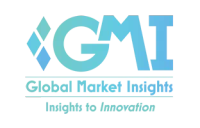
The U.S. over the counter drugs market is projected to grow from USD 54.6 billion in 2025 to USD 86.3 billion by 2034, says latest research report by Global Market Insights Inc. based on industry segment covering drug category, formulation type, distribution channel and more.
Selbyville, DE. – The U.S. over-the-counter (OTC) drugs market was estimated at USD 52.8 billion in 2024 and is expected to grow from USD 54.6 billion in 2025 to USD 86.3 billion by 2034, at a CAGR of 5.2%, according to the latest report published by Global Market Insights Inc.Intense market competition: The OTC market is highly saturated, with numerous brands competing for consumer attention, making it difficult for new entrants to gain traction. · Consumer safety concerns: Misuse or overuse of OTC drugs without professional guidance can lead to adverse effects, creating a need for better consumer education and monitoring.Browse key industry insights spread across 100 pages with 50 market data tables and figures from the report, “U.S. Over the Counter (OTC) Drugs Market Size - By Drug Category, By Formulation Type, By Distribution Channel, Growth Forecast, 2025 - 2034” in detail, along with the table of contents:Companies collaborate closely with these channels to execute co-marketing initiatives, loyalty programs, and educational campaigns, ensuring strong placement and sustained consumer engagement. · South Atlantic over-the-counter drugs market held a sustainable share in 2024.
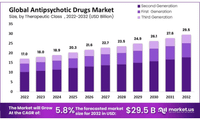
Global Antipsychotic Drugs Market size was valued at USD 18.9 Billion in 2024 and is expected to grow to USD 29.5 Billion in 2032.
If you choose to republish our data on your own website, we simply ask that you provide a proper citation or link back to the respective page on Market.us Media. We appreciate your support and look forward to continuing to provide valuable insights for our audience. ... New York, NY – Sep 04, 2025 – The Global Antipsychotic Drugs Market size was valued at USD 18.9 Billion in 2024 and is expected to grow to USD 29.5 Billion in 2032.The demand for improved treatment outcomes, coupled with innovation in drug development, has encouraged pharmaceutical companies to focus on next-generation antipsychotics with better safety and tolerability. Advances in personalized medicine and long-acting injectable formulations are also transforming patient adherence and long-term care management. According to industry trends, the market growth is further supported by increasing government initiatives, mental health awareness campaigns, and investment in psychiatric care infrastructure.Based on disease analysis, schizophrenia represented the largest share of the global market in 2022. In terms of distribution channel, the hospital pharmacies segment accounted for the leading revenue share in 2022. Regionally, North America contributed the highest revenue share of 45% in 2022, while the Asia-Pacific region is anticipated to record the fastest growth rate during the forecast period. North America is expected to maintain the largest share of the antipsychotic drugs market, supported by its well-established healthcare infrastructure, favorable regulatory framework, increasing prevalence of mental health disorders, and strong government initiatives.Factors such as a large patient population, increasing recognition of mental health issues, and improvements in healthcare infrastructure, particularly in emerging economies such as India and China, are expected to accelerate market expansion in this region. What are antipsychotic drugs?
Biosimilars create cost-saving opportunities for patients. Many hoped that they would quickly gain market share, but the reality has been disappointing.
Biologic drugs, made from living organisms and usually taken by injection or infusion, are expensive treatments for complex chronic conditions such as cancer and autoimmune diseases. Biosimilars, clinically comparable to biologics and priced lower, create cost-saving opportunities for patients and plan sponsors. Many hoped that biosimilars would quickly gain ground once they entered the market.A recent report from the Department of Health and Human Services found that, three years after market entry, biosimilars had captured only about half of the market on average. In contrast, generics—identical copies of small molecule, orally taken drugs—typically take 90% of the market within the same time frame.What explains such a gap in market penetration? First, biosimilars are highly similar, but not identical, to their reference biologics, whereas generics have identical active ingredients to their branded counterparts. In the U.S., pharmacies can automatically substitute a generic for a prescribed branded drug, but cannot do so for biosimilars, discouraging their uptake.PBMs manage prescription drug benefits for plan sponsors, wield enormous power over a drug’s market share through utilization control strategies. They often prefer high-list-price, high-rebate biologics over low-list-price, low-or-no-rebate biosimilars, since PBMs retain a portion of the rebates as revenue.

Common user questions regarding AI's impact on the benzodiazepine market often revolve around its potential to revolutionize diagnosis, treatment personalization, and drug discovery, while also raising concerns about data privacy and the ethical implications of AI-driven healthcare.
Accelerated drug discovery and repurposing efforts for novel anxiolytics and hypnotics. Enhanced patient monitoring and adherence tracking through AI-powered digital health platforms. Optimization of clinical trial design and patient recruitment for new mental health therapies. Analysis of common user questions regarding the benzodiazepine market size and forecast reveals a consistent focus on understanding the market's trajectory amidst evolving regulatory landscapes and increasing public awareness of potential risks.Another key insight is the regional variability in market dynamics, with significant growth opportunities in emerging economies where mental health services are expanding, contrasted with more mature markets experiencing increased scrutiny and a shift towards non-pharmacological interventions. The forecast indicates that despite existing challenges, the market will demonstrate resilient growth driven by unmet needs in mental health, alongside continuous innovation aimed at improving drug safety profiles.This innovation could potentially lead to a new generation of safer benzodiazepine-like drugs or entirely novel chemical entities that address the unmet needs for effective yet non-addictive treatments for anxiety and sleep disorders. Emerging markets, especially in Asia Pacific and Latin America, present substantial untapped opportunities.The ongoing stigma surrounding mental health conditions and their pharmacological treatment also presents a significant hurdle, deterring some individuals from seeking necessary care or adhering to prescribed medication regimens, thereby limiting market penetration and patient compliance. Furthermore, the high costs associated with research and development for new central nervous system (CNS) drugs, coupled with the long and complex regulatory approval processes, make innovation in this space particularly challenging.






